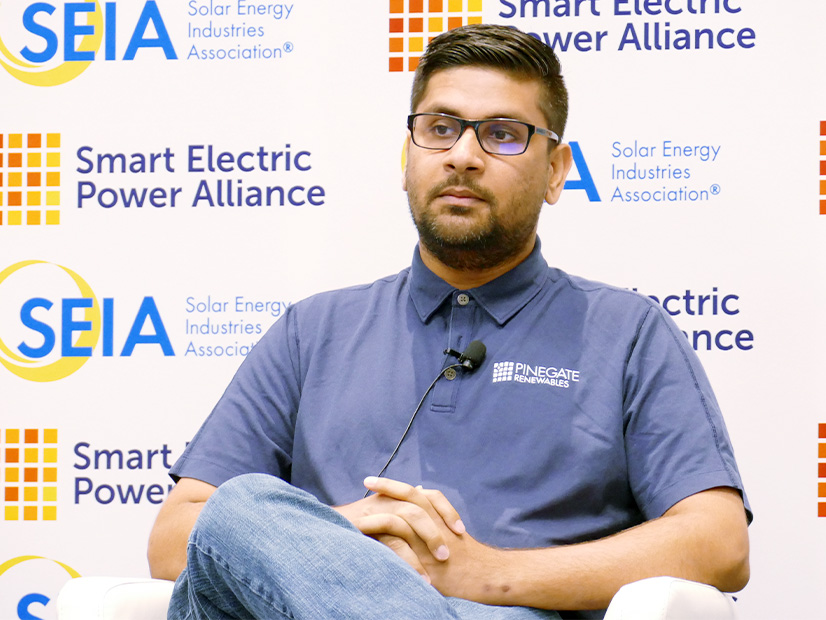ATLANTA — Despite current supply chain problems, energy storage is just beginning to capture its potential, developers told the RE+ Southeast conference, sponsored by the Solar Energy Industries Association (SEIA) and Smart Electric Power Alliance (SEPA), last week.
Raafe Khan, director of energy storage for Pine Gate Renewables, said supply chain problems have “definitely put a dent in many developers’ plans” but predicted the problem will ease because of “all these giga factories coming online in the next six to 12 months.”
Speakers expressed optimism over the resource’s future in supplying capacity and reducing demand charges and offered varying projections on the need for storage of longer than four hours.
Sizes Needed
Dmitri Moundous, senior manager of storage business development for Cypress Creek Renewables, said most peaking capacity needs in the near term can be served by two- to four-hour storage, with six- and eight-hour plus storage not widely needed until the 2030s.
 Dmitri Moundous, Cypress Creek Renewables | © RTO Insider LLC
Dmitri Moundous, Cypress Creek Renewables | © RTO Insider LLC“Once you get into those scenarios of 90-plus percent renewables, that’s when you start seeing multi-day and seasonal needs start showing up.”
Edward May, managing partner of Energy Intelligence Partners Consulting, said the need for longer-term storage may be coming faster than anticipated.
“We have been surprised. We have seen a couple of big, integrated utilities whose draft IRPs are reflecting some level of long-duration storage relatively soon,” he said.
“There seems to be plenty of room for two- and four-hour duration for the foreseeable future, but we are seeing some of the big utilities who are running their internal models and coming back and saying, ‘Actually, our models are telling us that … there is some value from long-duration storage in certain spots, on seams, things like that.’”
Reducing Demand Charges
May said he also sees increasing use of storage to reduce demand charges: “Co-ops, which are effectively just big C&I [commercial and industrial] customers, are subject to the same demand charges that a big manufacturing plant [has]. Some are going through the court systems to be allowed … to find ways to get batteries to be used as an asset that they can utilize.”
 Edward May, Energy Intelligence Partners Consulting | © RTO Insider LLC
Edward May, Energy Intelligence Partners Consulting | © RTO Insider LLCIn February, FERC ordered Duke Energy Progress (NYSE:DUK) and the North Carolina Eastern Municipal Power Agency (NCEMPA) to negotiate over how their supply contract should be changed to reflect the NCEMPA’s use of batteries to shave its demand charges (ER22-682). (See FERC Orders Negotiations in Duke-Muni Contract Dispute.)
Reducing usage during the time periods when demand charges are assessed “can save 50% off your bill,” he said. “So it’s pretty big number.”
“There are some co-ops in the Southeast that prior to energy storage … employed a person to sit at the desk and watch the weather,” he added.
“And basically, when temperatures are going to spike, they put on all their demand response and turn on diesel gensets at their largest customers.”
Storage as Capacity
Moundous said he wants to see storage grow beyond a grid following role to provide inertia support in areas like the Texas panhandle. “And we’re gonna see more and more of that on higher renewable penetration systems,” he said. “We have not scratched the surface of how much energy storage can provide capacity, in both regulated and deregulated markets, and how much you can displace uneconomic coal plants. So let’s get that done first and deploy in gigawatt scale.”

